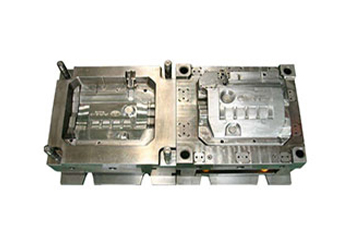Zinc alloy die castings are currently widely used in various decorations, such as furniture accessories, architectural decorations, bathroom accessories, lighting parts, toys, tie clips, belt buckles, various metal buckles, etc., so the surface quality of the castings is high, and Good surface treatment performance is required. The most common defect of zinc alloy die castings is surface blistering.
Defect characterization: There are small bumps on the surface of die casting.
Found out after die casting.
Revealed after polishing or machining.
Appears after oil injection or electroplating.
cause:
1.Caused by holes: mainly the pores and contraction mechanism. The pores are often round, and the contraction is mostly irregular.
(1) Causes of stomata: a. In the process of filling and solidification of molten metal, due to gas intrusion, pores are formed on the surface or inside of the casting.
b The intrusion of volatilized gas from paint.
c The gas content of the alloy liquid is too high and precipitates during solidification.
When the gas in the cavity, the gas volatilized by the coating, and the gas precipitated by the solidification of the alloy, when the mold exhaust is poor, the pores formed in the casting are finally left.
(2) Causes of shrinkage: a. During the solidification of molten metal, shrinkage occurs due to the reduction in volume or the failure of the final solidified part to be fed by the molten metal.
b Castings with uneven thickness or local overheating of castings cause a certain part to solidify slowly, and the surface will form a recess when the volume shrinks.
Due to the existence of pores and shrinkage holes, the holes may enter water during surface treatment of die castings. When painting and electroplating are carried out after baking, the gas in the holes will be heated and expanded; or the water in the holes will become steam and expand in volume. This results in blistering on the surface of the casting.
2. Intergranular corrosion causes:
Harmful impurities in the composition of zinc alloys: lead, cadmium, and tin will accumulate at the grain boundaries and cause intergranular corrosion. The metal matrix is broken due to intergranular corrosion, and electroplating accelerates this scourge, and the parts affected by intergranular corrosion will expand. The coating is lifted, causing blistering on the surface of the casting. Especially in a humid environment, intergranular corrosion can cause the casting to deform, crack, or even break. (Picture 1 on the right)
3. Cracks cause: water pattern, cold barrier pattern, hot crack.
Water pattern and cold barrier pattern: During the filling process, the molten metal that enters first contacts the mold wall and solidifies prematurely, and then enters the molten metal and cannot be fused with the solidified metal layer. Moiré patterns are formed at the butt joints on the surface of the casting. Strip defects appear, see Figure 2. The water mark is generally in the shallow layer on the surface of the casting; while the cold barrier may penetrate into the inside of the casting.
Thermal cracking:
a When the thickness of the casting is uneven, stress will be generated during the solidification process;
b Ejected prematurely, and the metal strength is not enough;
c Uneven force during ejection
d Too high mold temperature makes the crystal grains coarse;
e Hazardous impurities are present.
The above factors may cause cracks.
When there are water marks, cold barrier marks, and hot cracks in the die casting, the solution will penetrate into the cracks during electroplating, and it will be converted into steam during baking, and the pressure will lift the electroplated layer to form blisters.
There are two levels of forced feeding: extrusion feeding and forging feeding: to achieve the forced feeding of castings, there are two levels. One is basically to eliminate the shrinkage cavity and porosity defects of castings, and the other is to make the inside of the blank reach the degree of broken grain or forged structure. If we want to use different words to express these two different degrees, then we can use "squeeze feeding" to express the former, and we can use "forging feeding" to express the latter. An understanding that should be paid full attention to, and a concept to distinguish is that feeding is a direct means, and it cannot be done indirectly. In the process, we can have a process parameter to express, this is the "feeding pressure". In terms of physical principles, the concept of pressure can appear in two situations. One is in the case of liquid, that is, in the case of "Pascal's Law". For clarity, we define it as "liquid pressure", and the other is in the case of solid state. , We define it as "solid pressure". It should be noted that the applicable conditions of the pressure concept in these two different states. If we confuse, big problems will arise.
